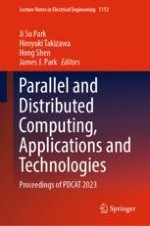2024 | Buch
Parallel and Distributed Computing, Applications and Technologies
Proceedings of PDCAT 2023
herausgegeben von: Ji Su Park, Hiroyuki Takizawa, Hong Shen, James J. Park
Verlag: Springer Nature Singapore
Buchreihe : Lecture Notes in Electrical Engineering
